Nail problems - how to prevent them?

The little baby feet are extremely cute. Soft, squishy, and they smell great - you'd love to munch on them! However, they are also very sensitive. It only takes a slight irritation for them to start hurting. It also happens that seemingly trivial abrasions become the cause of serious nail problems, which can have big consequences in adult life. In addition to combating them, learn how to prevent them.
Many things from childhood have an impact on adult life. We are talking not only about the way of upbringing, but also about body care, especially foot care. It turns out that problems that were downplayed in childhood return in adulthood and often make life very unpleasant. If you want to give your little one a good start to adulthood, take care of prevention and prevent problems before they occur.
What are the most common toenail problems in children?
Toddlers often walk barefoot around the house and garden. This is a good habit that helps little feet to form properly. However, the skin of the feet through contact with dirty ground is more vulnerable to various injuries and diseases. The most common problems include:
- Ingrown nails - the most common ailment that affects both children and adults. It arises as a result of improper cutting of the plate, wearing improper shoes, as well as mechanical trauma. A nail cutting into the skin causes pain and bleeding. It is then also easy to get bacterial infections. The problem of ingrown nails requires dermatological consultation, and in a very advanced stage also the help of a surgeon,
- Nail fungus - the disease is caused by dermatophytes. First the skin is infected, and only later the nails. Typical symptoms of ringworm are yellowing and distortion of the plate, followed by its crumbling, cracking and detachment from the matrix. This condition immediately requires contact with a doctor and the introduction of appropriate medication,
- Nail dystrophy - this is not a disease, but a change in the shape of the plate caused by trauma or wearing inappropriate shoes. Most often it manifests itself by discoloration and thickening of the nail, and in the advanced stage even its skewing. Symptoms usually resolve spontaneously after early enough exclusion of the damaging factor,
- Subungual hematomas - a typical pediatric injury that occurs by, for example, slamming fingers with a drawer or door. It manifests itself as red or bluish brown spots under the nail plate, which move with the growth of the plate until they disappear. For large injuries that involve more than half of the nail, specialist help is needed,
- Ankylosis - a fairly common disease that, although it affects the nail, does not involve the plate, but usually the skin around it. It usually appears on one finger and occurs after the nail is hit, as a result of which bacteria move deep under the plate, where they multiply and cause an inflammatory reaction. The result is a red, painful swelling, which may be accompanied by a purulent blister. Sometimes the plaque also becomes distorted. Often the symptoms appear suddenly and "out of nowhere". This disease requires dermatological consultation and the implementation of appropriate antibacterial drugs.
Remember that these are not the only problems your child may face. Therefore, don't ignore discoloration or changes in the shape of the nail plate, and if something worries you, see a doctor with your toddler.
How to prevent nail deformities and diseases in children?
Wondering what preventive measures you can take against deformities and toenail diseases in children? The basic principle is to wear the right footwear that:
- It has a wide nose, so that the toes are not squeezed and there is no deformation of the nails,
- It is made of natural materials, such as leather. It is breathable, which helps prevent excessive foot perspiration and keeps the foot dry. As a result, the risk of ringworm is reduced,
- It has a soft and pleasant to the touch lining. The soft material does not cause irritation or chafing, so you don't have to worry about getting sick.
A flexible sole that works naturally with the foot is, of course, welcome. This allows the child to engage the toes while walking, which prevents them from misplacing in the shoe. Footwear that meets these requirements can be found in the Tupu Tupu range.
It is also a good idea to exercise the foot muscles. The fitter the child, the less risk of injury and, as a result, fewer nail problems.
How to properly care for children's nails?
Nails are an area that is highly susceptible to various bacteria and viruses, so they require regular and proper care. It consists of 2 steps: cleaning and shortening the nail plate. However, most children do not like this. It happens that toddlers cry and pull out, so it is worth asking for help from another person beforehand and prepare yourself mentally for the fight.
Nail cleaning should be done after every game in the garden or playground, as well as after activities with plastic utensils, such as plasticine or kinetic sand. Any dirt can irritate the epidermis and lead to infection.
The easiest way to remove dirt is under water with a soft natural bristle brush. Do not rub the plate too hard, as you can damage it very easily. If you can't clean your nails, wait for a bath. After soaking your feet, the dirt often washes off on its own.
Only after you have thoroughly cleaned the plate can you move on to cutting it. It's best if you do it after bathing, when the nails are soft, because this reduces the risk of cracking and crumbling of the plate, and thus ingrown nail or the appearance of zanoccosis. However, in newborns, the plate can be very delicate and soft, so it can be cut at any time of the day.
Shortening the plate is quite easy, it just requires a little practice. All you need is:
- grasp the toddler's foot in the palm of your hand so that it does not suddenly move,
- Cut all nails straight.
Do not remove or push back the cuticles around the nails! They serve a protective function. If sharp nail tips appear, you can gently rub them with a file. However, do not rub too hard, as the children's plate is very thin and can be easily damaged. Finally, you can lubricate the feet with cream or olive oil.
Remember, those little feet need to be healthy, strong and fit so that they can carry your child through life and take him or her where the little one wants to go. Take care of this from an early age.
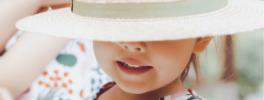
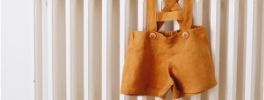
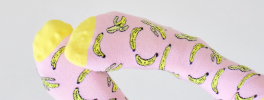
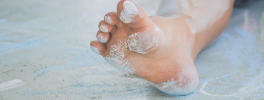
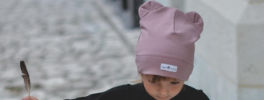
 Cookies
Cookies
comments (0)